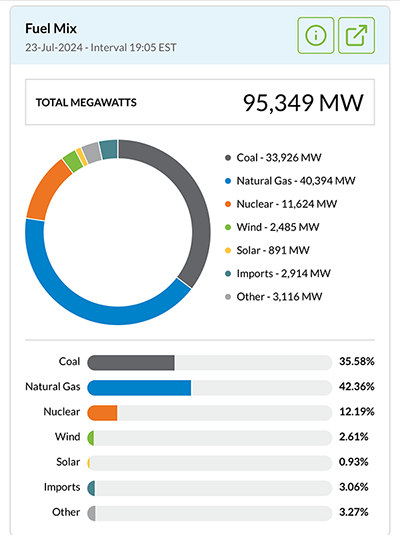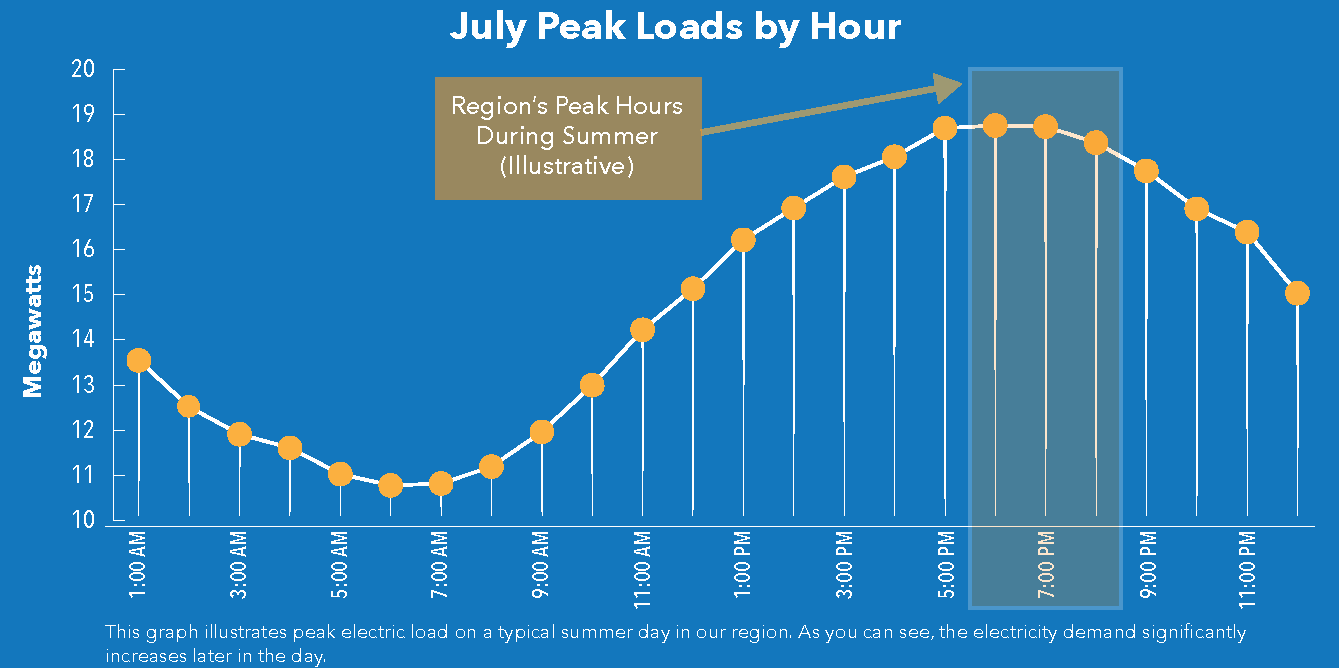EnerStar CEO Update - Dave Clinton
Could Our Region See Rolling Blackouts? If so, blame it on the half-inch garden hose!
This month, my column will focus on two terms often used in the electric utility industry and recently in national news: “capacity” and “energy.”
These two terms are at the heart of a looming problem for the electric industry. They are difficult to understand in part because we cannot see electricity. Yet the physics of electricity are as real as, say, water traveling through a garden hose. Let me explain further.
The Garden Hose Analogy
A half-inch garden hose can only carry a certain amount of water at a time. Thus, no matter how much water you want, you are limited to what the hose can deliver moment by moment. This is the “capacity” of the garden hose.
you are limited to what the hose can deliver moment by moment. This is the “capacity” of the garden hose.
However, depending on how long you run it, it will ultimately deliver a certain quantity of water. That quantity of water is like “energy” in the electric world.
Currently, our industry is capacity-constrained, not energy-constrained. Why is this? We are capacity-constrained because:
- Due to governmental regulation, existing “dispatchable” generating plants are being shut down. Dispatchable simply means they can be turned on when needed. It includes coal and natural gas-fired plants. Power that is non-dispatchable means it runs when the wind blows or the sun shines, regardless of our region’s load requirements.
- Lead times are long for building new generating plants. It can take perhaps six or more years to get the permit, let alone construction time, and costs are rising.
- There is difficulty in building new transmission lines.
There is more to the story, but the above illustrates some of the main reasons our region is capacity-constrained. You may ask, “Well, I see all the new wind turbines and solar panels; aren’t they helping?” Perhaps a little. They add some energy to the grid but do not help with the capacity issue.
Let’s dive deeper into this issue.
Real-World Example
On average, our region runs at peak capacity Monday through Friday (except holidays) between 5 p.m. and 8 p.m. Our region peaks even more during the summer months. Please consider the illustrative graph to the (location), which shows the typical profile of July loads.
As is apparent, loads rise substantially during these peak times and then fall off. Unfortunately, solar generation lessens later in the day and does not meet our capacity needs. Of course, wind generation may or may not be there, depending on wind speeds.
Judge for yourself what I am saying. Location is the actual data for our region on July 23, 2024. Please consider how electric load needs were met that day at 7 p.m. During this period, solar energy provided less than 1% of our region’s capacity needs, and wind energy was just under 3%. As the statistics show, they contribute very little during critical peak times, at least on this particular day.
The current situation raises numerous unresolved questions about the future. How will we handle increased energy demands if coal generation decreases, new transmission lines are not constructed, and dispatchable generation construction is delayed? We all wish we had the answers to these questions.
The changing world
So far, this article has concentrated on how capacity is becoming a problem. Not yet addressed is how fast new electric loads are growing. Many sources project that electricity use in the United States will continue to rise by as much as 27% over the coming decades. There are many reasons for this increase, but contributing factors include artificial intelligence (AI) and Bitcoin data centers and the push towards electrifying vehicles and manufacturing. I will save this issue for future articles.
What we can do about it
EnerStar is a member of the National Rural Electric Cooperative Association, representing nearly 900 local electric cooperatives. NRECA serves 42 million Americans across 56 percent of the nation’s landscape. Our co-op is also part of the Wabash Valley Power Alliance, our regional wholesale power provider. Together with these organizations, cooperative leaders are committed to ensuring reliable and affordable power sources. We will continue to work with legislators to establish sensible regulations for our power sources.
Rest assured - we are looking out for you.

